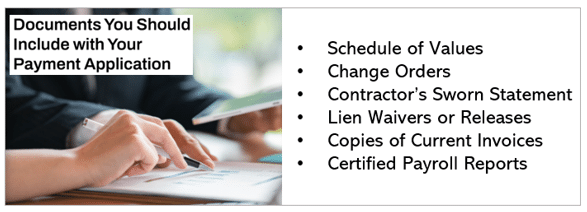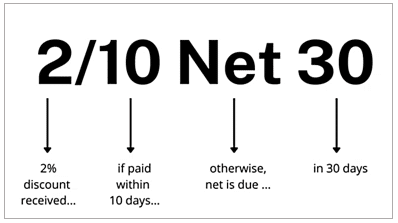When you’re a contractor, getting paid on time is probably the most crucial and challenging aspect of your construction business.
Timely payments from your clients ensure you can pay your workers, suppliers, and subcontractors, settle overhead costs, and finance other business operations.
On the other hand, late payments can seriously reduce your profits, drain resources, cause payment disputes, and even lead to bankruptcy.
So, being aware of this, what can you as a contractor do to get paid on time?
Here are five practical tips.
In this article...
Have a Contract in Place
Having a contract with clearly defined payment terms and schedule is the foundation for getting paid on time and protecting your business.
Essentially, a construction contract should establish clear expectations and responsibilities for both parties, including all the client’s financial obligations toward your business throughout the project.
In fact, all of this should be transparently communicated and agreed upon with the client before a contract is signed, which can go a long way in establishing clear rules and preventing many problems down the line.
Of course, as construction contracts can get pretty complex even on simpler projects, it’s
often best to consult legal experts who will ensure that contract clauses fairly allocate the usual construction risks between you and the client.
For example, this law firm offers nationwide construction contract review and creation services.

Of course, a well-made contract should define what happens in case of unexpected events, such as project changes or delays, and how they will be billed and paid.
Naturally, the contract should also specify what happens if the client fails to pay on time, ranging from charging late payment fees to taking legal action.
After the contract is signed, all these preparatory actions, negotiations, and consultations will form the basis for clear payment terms and create a strong foundation for future timely payments.
In other words, payment terms should define all of the client’s financial obligations toward your business so that there are no misunderstandings about when, how, and how much the client is expected to pay.
Therefore, an integral part of your construction contract with the client should be a payment schedule, i.e., a list of dates/milestones when payments will be made.

That schedule can then be used to track payment dates and amounts, as well as send invoices on time, which also helps with timely payments, as discussed below.
Overall, having a contract with clearly defined payment terms and a schedule in place is essential both for getting paid on time and protecting your business if the client fails to settle their dues on time—or at all.
Send Your Invoices on Time
Sending your invoices on time may sound straightforward, but there are many factors to consider, such as accurate client information, invoice delivery method, and required supporting documents.
For starters, to get paid in a timely fashion, contractors must send their invoices early on, because any delay in sending an invoice will automatically prolong the time it takes for the invoice to be paid by the client, particularly in cases of more complex construction projects.
Naturally, the right time to send an invoice will depend on the payment schedule you have agreed on with the client in the contract.

Therefore, you should monitor the payment schedule outlined in your contract and prepare accurate and detailed invoices in advance so they can be sent on time.
It’s also a good idea to agree on a preferred invoice delivery method (e-mail, software app, e-invoice, regular post) and define all the other invoicing requirements, such as supporting documentation that should be included as proof of work.
Contractors and subcontractors usually need to submit payment applications to get paid on larger construction projects.
Payment applications differ from invoices in that they include much more information and documentation than a regular invoice would.
For instance, here are some common additional documents that may need to be enclosed with a payment application, courtesy of Built:

This list only highlights the importance of defining all the elements needed for the client to pay the invoice without questioning or disputing it ahead of time, as such.
In fact, over 60% of late payments across all industries result from incorrect invoices, and the complexity of construction only aggravates this issue.
At this point, we should mention that all these invoicing requirements and processes can be organized, digitized, and automated by using all-in-one or specialized software tools for invoicing, accounting, project management, etc.
Likewise, using inventory management software, such as GoCodes, to track materials, tools, and equipment can also help keep invoices accurate or resolve misunderstandings by providing a digital trail of evidence.
In any case, remember that, to get paid on time, it’s not enough to send invoices on time.
The content of the invoices must be detailed and accurate, and any required supporting documents must be submitted so that the client can easily review the invoice and pay it in a timely manner.
Make It Easy for Clients to Pay
Making it easy for clients to pay invoices on time involves offering them different options both in terms of payment plans and payment methods.
This means you should first carefully select the right type of payment schedule for a specific project and client that will facilitate timely payments.
It’s best to assess different types of payment schedules against the project size, price, and duration while vetting the client’s financial position and considering their needs.
This will help you find the payment plan that will best protect your rights and cash flow while enabling the client to make timely payments throughout the project.
Although the payment schedule you select will depend on the type of construction contract, delivery method, and many other project specifics, here’s a list of some common payment schedule formats to consider:

For example, payments for larger construction projects are usually based on some form of progress payments, which can be made:
- at equal time intervals (time-based)
- when specific project milestones are reached (milestone-based)
- based on a certain percentage of the project’s completion (completion-based)
When an appropriate payment plan is defined and agreed upon with the client, you should also make it easier for them to pay invoices on time by offering different payment options.
In other words, in addition to traditional payment methods (cash, checks, wire transfers), you should consider accepting other electronic payment options such as e-checks, credit cards, and online payment platforms like PayPal and Apple Pay.
Doing so will facilitate timely payments because clients will have the option of paying in a way that’s most convenient for them.
Overall, choosing the right type of payment plan for a specific project and client and offering multiple payment options will make it easier for clients to pay on time.
Motivate Clients to Pay on Time
Another strategy worth considering is motivating clients to pay on time by offering incentives for early payments and/or penalties for late payments.
In the case of early payment incentives, they act as the proverbial “carrot” that encourages clients to pay their invoice well before the due date, and they usually come in the form of a small discount.
For instance, you can choose to apply the 2/10 net 30 principle to your payment terms and invoices, which essentially offers a 2% discount for the client who pays their invoice within the first ten days of a 30-day payment period.

Of course, any of the above payment parameters can be adjusted according to what’s most beneficial for your business and fits the parameters of a specific project.
You can also use non-monetary incentives like offering a free routine maintenance visit as a reward for early payment.
Any of these incentives can motivate clients to pay their invoices well before the due date.
Conversely, penalties for late payment can be considered incentives for clients to pay by the due date, i.e., they act as a “stick” that discourages clients from making late payments.
Such late payment fees should be reasonable (every state has different rules about the maximum amount of late fees) and are usually set as a fixed amount or a percentage of the due amount.
However, any late payment penalties, as well as early payment discounts, must be clearly defined in the contract and communicated to the client in advance to avoid any issues that could delay payment when your invoice arrives.
Finally, these incentives should be noted on the invoice in a prominent way so they’re not overlooked.
Overall, rewarding early payments and/or penalizing late ones can be a worthwhile strategy for motivating your clients to pay on time.
Send a Preliminary Notice
A preliminary notice can be a valuable tool for motivating clients to pay on time while also enabling you to protect your rights if they don’t.
A preliminary notice is a document that’s usually sent at the start of a construction project, i.e., before any payments are made, to notify the client of upcoming payments under the contract and establish the contractor’s right to file a mechanic’s lien if they don’t receive payment.
A mechanic’s lien is a legal claim on the client’s property that unpaid contractors and material suppliers can file, which makes it another helpful payment tool.
However, in some states, contractors are required to send a preliminary notice if they want to preserve their right to file a mechanic’s lien.
You can find out whether your state requires a preliminary notice online or by using Levelset’s map made precisely for such purposes:

Even when a preliminary notice is not required by law, sending it at the beginning of the project sends a strong message to the client that you know your rights and intend to enforce them if the client defaults on their payment.
That message alone can be a powerful motivator for the client to prioritize the payment of your invoice(s).
When preliminary notices are coupled with (the possibility of) filing a mechanic’s lien, it’s clear they can be a valuable tool to both encourage timely payments from clients and ensure your rights can be protected if they fail to pay on time or at all.
Conclusion
Even though the construction industry is infamous for slow payments, it’s clear that you, as a contractor, have a range of tools at your disposal that can encourage clients to pay you on time.
Naturally, this starts with having a contract with clear payment terms in place, followed by sending your invoices on time, making it easy for clients to pay, motivating them to pay on time, and sending a preliminary notice.
When these tips are put into practice, you’ll be able to more effectively manage your business’s cash flow and avoid many problems, delays, and disputes related to not being paid on time.





